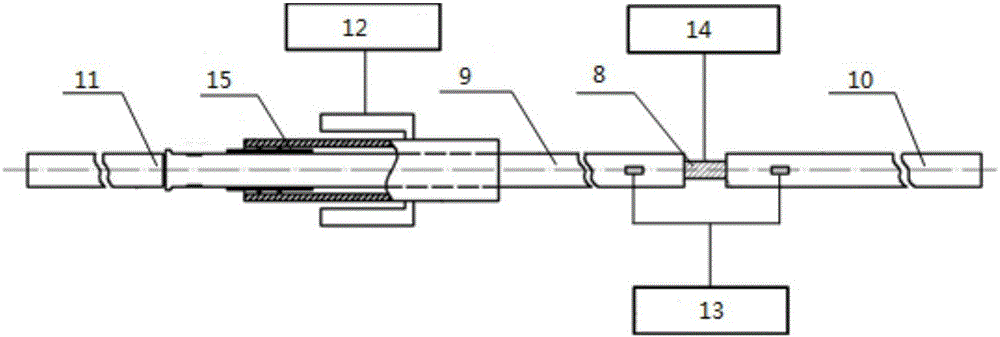Rubber material viscous and superelastic constitutive model building method considering correlation effect
A rubber material, constitutive model technology, applied in special data processing applications, instruments, design optimization/simulation, etc., can solve problems such as mechanical characterization
- Summary
- Abstract
- Description
- Claims
- Application Information
AI Technical Summary
Problems solved by technology
Method used
Image
Examples
Embodiment Construction
[0070] The present invention will be described in further detail below in conjunction with the accompanying drawings.
[0071] Principle of the present invention is as follows:
[0072] The visco-hyperelastic constitutive model of rubber materials is established, and the self-built quasi-static uniaxial tensile test device and the separate Hopkinson tensile test device (SHTB) are used to verify it experimentally, which provides a basis for the research on the tensile mechanical properties of rubber materials. refer to. First, in order to make the constitutive model have the characteristics of large predicted strain range, few parameters and clear physical meaning, the hyperelastic constitutive model and the viscoelastic constitutive model were combined to establish a viscohyperelastic constitutive model for rubber materials; secondly, The common Instron testing machine has problems such as clamping difficulty and too large measuring range when testing small-sized specimens. A...
PUM
 Login to View More
Login to View More Abstract
Description
Claims
Application Information
 Login to View More
Login to View More - R&D
- Intellectual Property
- Life Sciences
- Materials
- Tech Scout
- Unparalleled Data Quality
- Higher Quality Content
- 60% Fewer Hallucinations
Browse by: Latest US Patents, China's latest patents, Technical Efficacy Thesaurus, Application Domain, Technology Topic, Popular Technical Reports.
© 2025 PatSnap. All rights reserved.Legal|Privacy policy|Modern Slavery Act Transparency Statement|Sitemap|About US| Contact US: help@patsnap.com



